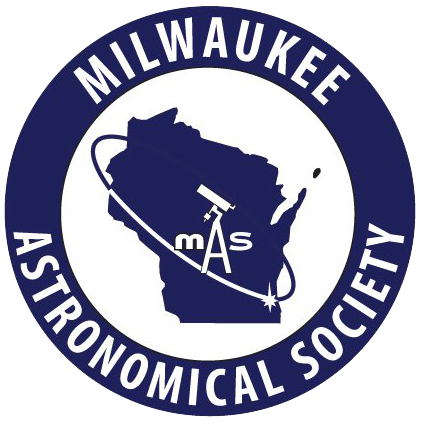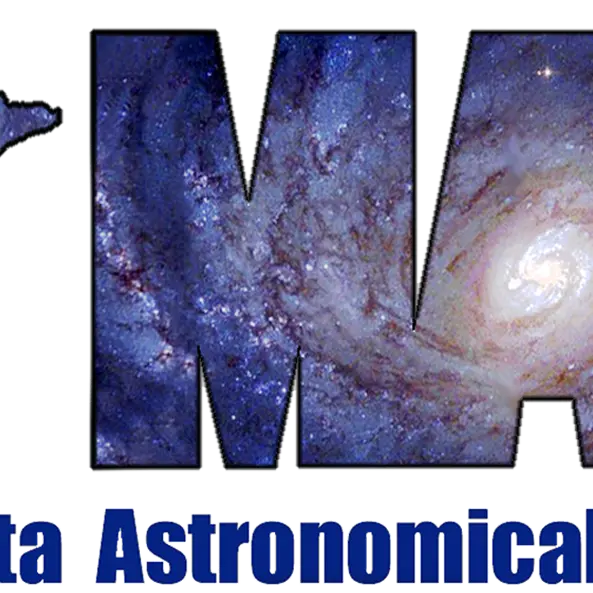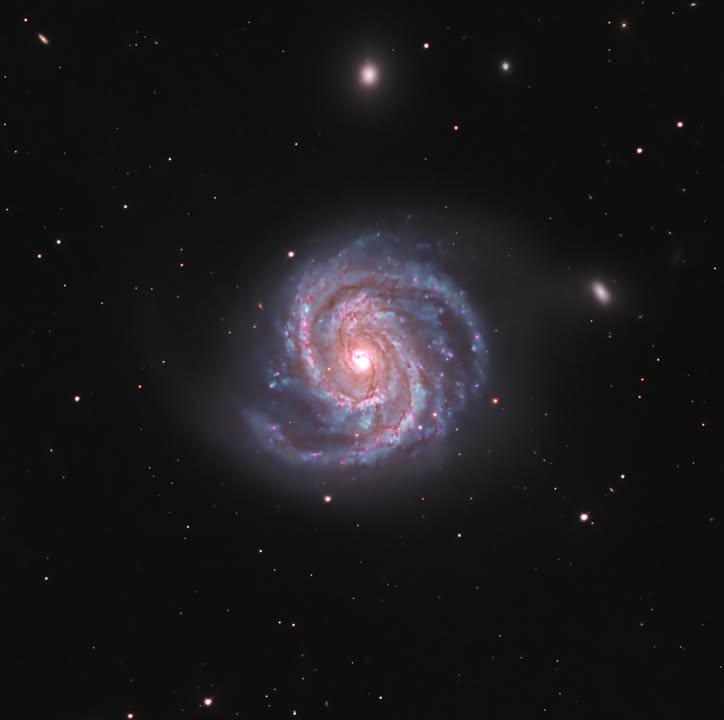
Minnesota Astronomical Society
The Minnesota Astronomical Society is a tax-exempt 501 (c) (3) organization based in the Twin Cities of Minneapolis and St. Paul. Membership is open to anyone with an interest in astronomy. CORPORATION IS ORGANIZED EXCLUSIVELY FOR CHARITABLE, RELIGIOUS, EDUCATIONAL, OR SCIENTIFIC PURPOSES AS SPECIFIED IN SECTION 501(C)(3) OF THE INTERNAL REVENUE CODE, OR THE CORRESPONDING SECTION OF A FUTURE FEDERAL TAX CODE. THIS CORPORATION SHALL NOT BE OPERATED FOR PROFIT, BUT RATHER SHALL BE OPERATED EXCLUSIVELY FOR CHARITABLE PURPOSES. THE SPECIFIC PURPOSE OF CORPORATION IS EDUCATIONAL AND CHARITABLE:1 EDUCATIONAL: TO INSTRUCT THE PUBLIC ABOUT ASTRONOMY THROUGH OBSERVATIONAL AND INFORMATIONAL PLATFORMS, LECTURES, FORUMS, DISCUSSION GROUPS, CLASSES, PUBLICATIONS, AND OTHER CELESTIAL OBSERVATION EVENTS.2CHARITABLE: TO ADVANCE EDUCATION BY ESTABLISHING AND MAINTAINING OBSERVATIONAL AND INFORMATIONAL FACILITIES FOR THE BENEFIT OF THE COMMUNITY, SEEKING TO ENHANCE COMMUNITY KNOWLEDGE ABOUT AND INVOLVEMENT IN ASTRONOMY, AND PROMOTING CAMARADERIE THROUGH MUTUAL INTEREST IN ASTRONOMY.

ICO
510180507
2200
Web
Sign in to see organisation website
Traffic
905610
Home - Minnesota Astronomical Society The Wonders of the Cosmos MAS Happenings Weekly Newsletter The latest information about the activities of the MAS. Signup below to get this delivered directly to your inbox. MAS Happenings March 4 2025 Mar 4 2025 Happenings this Week Annual Budget Meeting Quorum needed. BSIG Virtual Presentation Introduction to Astronomical Spectroscopy NCRAL Convention Please attend inperson at theApetu Teca Education Center or online using the Zoom link.
From Social media
News about from their social media (Facebook and X).
With thanks to Suresh Sreenivasan for images and text. M100 (NGC 4321) is a Grand Design spiral galaxy, a galaxy with very prominent and well-defined spiral arms. Some grand designs we see face-on, like this one, giving us a complete view of the spiral arms and the internal structure.
Like Comment
Data about organisation
Minneapolis
Organisations from Minnesota Astronomical Society

We're fueling the impact and effectiveness of nonprofits with guidance, expertise, and capital.

558. Downtown Minneapolis Neighborhood Association Inc
DMNA is the official neighborhood organization for Downtown East & West neighborhoods Anyone who lives, works or owns property in Downtown is eligible to volunteer, support, and attend our meetings.

559. Minnesota Astronomical Society
The Minnesota Astronomical Society is a tax-exempt 501 (c) (3) organization based in the Twin Cities of Minneapolis and St.

The American Institute of Architects Minnesota is a nonprofit association for architects.
Similar organisations
Similar organisations to Minnesota Astronomical Society based on mission, location, activites.

Des Moines Astronomical Society
The Cosmos is our home, and the night sky is where we can see it best.

Milwaukee Astronomical Society
The Milwaukee Astronomical Society (MAS) is an amateur astronomy club serving the greater Milwaukee a.

Minnesota Masonic Historical Society and Museum
Attend or host a performance, tour the Masonic Museum, or plan your wedding, special event or business meeting at Minnesota Masonic Heritage Center.
Similar Organisations Worldwide
Organisations in the world similar to Minnesota Astronomical Society.

CARDIFF ASTRONOMICAL SOCIETY (uk)
One of the largest and most active astronomical societies in the UK.

ASTROLAB DU MONT MEGANTIC (ca)
Parc national du Mont-Mégantic ASTROLab - Musée d’astronomie 1re Réserve internationale de ciel étoilé.

MEXBOROUGH AND SWINTON ASTRONOMICAL SOCIETY (uk)
We meet every Thursday evening, visitors are always welcome, in person or online.
Interesting nearby
Interesting organisations close by to residence of Minnesota Astronomical Society

Minnesota Doctors for Health Equity
Minnesota Doctors for Health Equity is a statewide coalition of healthcare professionals working toward health equity for all Minnesotans.

Upper Midwest Translators and Interpreters Association
As a professional association, we achieve our mission by improving the quality of work our members produce.

AMERICAN CIVIL LIBERTIES UNION OF
The ACLU of Minnesota is dedicated to protecting and promoting the civil liberties of all Minnesotans.
Similar social media (2200)
Organisations with similar social media impact to Minnesota Astronomical Society

120575. Newburgh Community Land Bank Inc
The Newburgh Community Land Bank stimulates local planning, economic development and neighborhood revitalization.

PROTECTING THE RIGHT TO READ.

120577. Minnesota Astronomical Society
The Minnesota Astronomical Society is a tax-exempt 501 (c) (3) organization based in the Twin Cities of Minneapolis and St.

120578. GRINNELL AREA ARTS COUNCIL
Grinnell Area Arts Council is a community arts organization offering arts education and programming.

120579. Phoenix Storm Rugby Football Club Inc.
The Phoenix Storm is an all-inclusive rugby team.
Similar traffic
Organisations with similar web traffic to Minnesota Astronomical Society

APANO unites Asians to build power, develop leaders, and advance equity through organizing, advocacy, community development and cultural work.

60979. Minnesota Astronomical Society
The Minnesota Astronomical Society is a tax-exempt 501 (c) (3) organization based in the Twin Cities of Minneapolis and St.

60980. Merrohawke Nature School
Merrohawke is a 501c3 nonprofit outdoor experiential education organization serving youth aged 2 -15.
Join us and make a difference for the future!
Sign Up
Please fill in your information. Everything is free, we might contact you with updates (but cancel any time!)
Sign in with GoogleOr
Good News
🌍✨ Excited to see U.N. Chief Guterres highlighting the power of weather forecasting in saving lives and preparing for climate challenges – teamwork for a safer future! #GoodNews #ClimateAction
Priorities: U.N. Chief Guterres Praises Weather Forecasting Abilities
Breitbart
Like Comment"Amidst the heartbreak, Racquel Perry finds strength in music to honor her son. 🎶 Her powerful voice transforms loss into a tribute, reminding us of the healing power of art. ❤️ #Inspiration #Community #Hope"
Her son was killed by a bullet in Chicago. Now, his memory lives on in song.
Chicago Sun-Times
Like Comment









